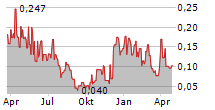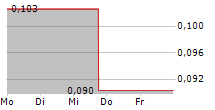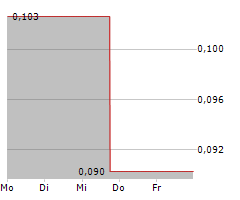Black-shale rock samples: Up to 9,066 ppm V2O5 and 598 ppm U3O₈, with associated 1,500 ppm Mo and 3,280 ppm Ni. Results support consistency of grade within the system when benchmarked against historic results.
Carbonate-replacement rock samples: Up to 0.75% Zn, 3.88% Pb, and 354 g/t Ag. Results confirm field observations and discovery of a new system.
Prospective trend length: Mapping and surface geochemistry together outline approximately 4.3 km of prospective strike.
Planned work: Targeted structural mapping and sampling to refine both models, EM over conductive shale panels, and IP-resistivity across carbonate-replacement corridors.
Vancouver, British Columbia--(Newsfile Corp. - September 16, 2025) - US Critical Metals Corp. (CSE: USCM) (OTCQB: USCMF) (FSE: 0IU) ("USCM" or the "Company") is pleased to announce results from its 2025 field program at the Long Canyon Vanadium-Uranium Project ("Long Canyon") located in Lemhi County, Idaho. The program consisted of collecting 102 rock samples within the Company's current claim blocks and has identified two complementary mineralizing systems:
1)Metal-rich black shales: Vanadium (V), nickel (Ni), molybdenum (Mo), zinc (Zn), and uranium (U) are hosted in stratigraphic black-shale horizons within the McGowan Creek Formation, with contributions from shaly beds at the top of the Middle Canyon Formation.
2)CRD-style ("CRD") mineralization: Silver (Ag), lead (Pb), zinc (Zn) ± copper (Cu), with elevated antimony (Sb), hosted in carbonates of the Jefferson Formation (limestone and locally dolostone) along mapped structures within the Long Canyon claims.
The completion of the program and results coincide with significant developments within the critical metals industry. Given the political shift in the U.S. to deglobalize and secure domestic sources of supply, the program was strategically timed to capitalize on the sweeping U.S. federal directive to expand nuclear energy and reform uranium permitting processes in the U.S. These developments are outlined in the executive order released on May 23, 2025. Long Canyon is ideally positioned to benefit from these initiatives, given it has the hallmarks of a polymetallic shale-hosted system.
The field program was led by Palliser Exploration Ltd., an experienced geologic and exploration consultancy. The program was designed to advance the understanding of uranium, vanadium, molybdenum, lead and zinc mineralization within the carbonaceous black shales and generate a broader regional understanding of additional systems within the claims. Long Canyon is held by the Company through a partnership with IDEX Metals Corp.
Executive Commentary
Mr. Darren Collins, CEO and Director, comments: "We are very pleased by the results of this field program. We have continued to confirm the potential grade and scale of the black-shale system and have now verified a new CRD system within the claim blocks. Our team will look to implement further programs at Long Canyon with the objective of commencing a well-defined drill program."
Black-Shale Hosted Results
Multi-element enrichment in V, Mo, Ni, U, and locally Zn occurs in organic-rich, stratiform lenses and beds. Mapping and surface geochemistry outline approximately 4.3 km of prospective strike. Of the 102 rock samples collected, 46 were assigned to the black-shale target within the Company's claims package.
Table 1. Black-Shale Result Highlights
| Element | Best Value | Average Value | Units |
| V2O5 | 9,066 | 1,522 | ppm |
| U3O₈ | 598 | 48 | ppm |
| Mo | 1,500 | 176 | ppm |
| Ni | 3,280 | 312 | ppm |
| Zn | 4,380 | 498 | ppm |
Geological context: The metal association (U, V, Mo, Ni, ± Zn) occurs in organic-rich black shale within mapped stratigraphic panels. The presence of pyrite in several samples, together with the redox-sensitive element suite, supports deposition under reducing basin conditions. Globally, metalliferous black shales are recognized as important sediment-hosted repositories of critical metals and commonly display kilometre-scale lateral continuity.1 At Long Canyon, the strongest geochemical responses coincide with mapped shale panels, supporting a stratigraphically controlled (i.e stratabound) target.
Note: Rock-chip/grab samples are selective and may not be representative of the property as a whole.
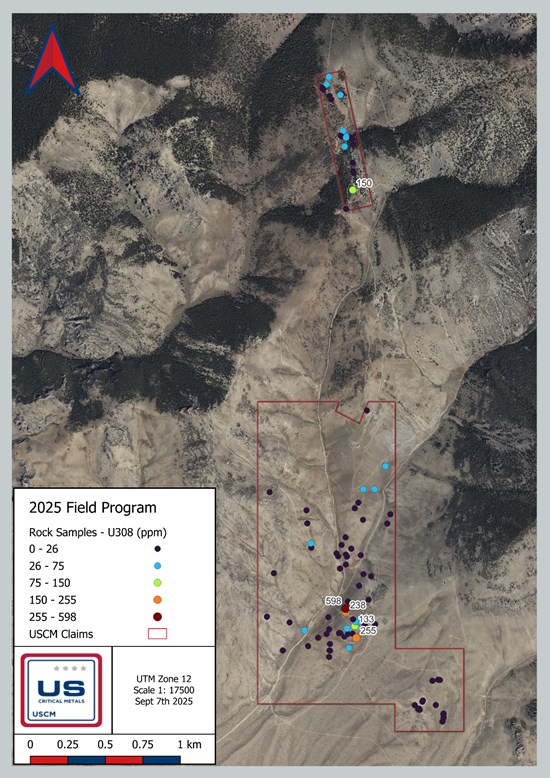
Figure 1. Rock samples - U3O₈ (ppm), Long Canyon.
Uranium reported as U3O₈ in grab rock samples, with graduated classes per legend. Annotated labels mark select sample values for location reference only. USCM claim boundary in red. UTM Zone 12, scale 1:17,500. Conversion used: U3O₈ (ppm) = U (ppm) × 1.17924. Rock samples are selective and may not be representative; see QA/QC.
To view an enhanced version of this graphic, please visit:
https://images.newsfilecorp.com/files/8837/266554_bb52367d44ec7a2c_001full.jpg
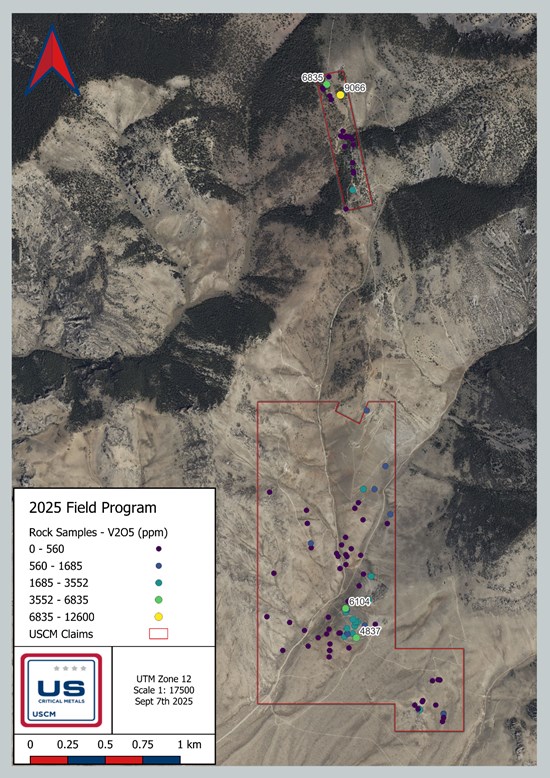
Figure 2. Rock samples - V2O5 (ppm), Long Canyon.
Vanadium reported as V2O5 in grab rock samples, with graduated classes per legend. Annotated labels mark select sample values for location reference only. USCM claim boundary in red. UTM Zone 12, scale 1:17,500. Conversion used: V2O5 (ppm) = V (ppm) × 1.7847. Rock samples are selective and may not be representative; see QA/QC.
To view an enhanced version of this graphic, please visit:
https://images.newsfilecorp.com/files/8837/266554_bb52367d44ec7a2c_002full.jpg
Carbonate-Replacement Results
Along Long Canyon, mineralization is concentrated within mapped structures in Jefferson Formation carbonates. Field observations include replacement of carbonate by sphalerite and galena, narrow vein and breccia-cement fill, bleaching, calc-silicate development, and patchy silicification, with local oxidation forming gossan after sulfides. Multi-element responses in Pb-Zn-Ag ± Cu with elevated Sb are consistent with components of a CRD system. Of the 102 rock samples collected, 56 were assigned to CRD-style targets.
Table 2. Carbonate-Replacement Result Highlights
| Element | Best Value | Average Value | Units |
| Zn | 0.75 | 0.09 | % |
| Pb | 3.9 | 0.36 | % |
| Ag | 354 | 8.7 | g/t |
| Sb | 279 | 17 | ppm |
Geological context: CRD systems develop where metal-bearing fluids react with reactive limestones and dolostones, producing Ag-Pb-Zn mineralization in replacement, vein, and breccia-cement styles, with Sb commonly elevated as a pathfinder.2 In silver-dominant jurisdictions such as Mexico and Peru, carbonate- and other sediment-hosted systems are important contributors to silver output, and sediment-hosted systems as a group dominate world lead and zinc production.3 In central Idaho, documented CRD occurrences include the Clayton Silver mine (Bayhorse district),4 the Triumph mine (Warm Springs district),5 and stratabound Ag-Pb-Zn bodies in Jefferson Formation dolomites of the Nicholia (Birch Creek) district (e.g., Viola).6 These examples are provided for geological context only; no equivalence in scale, grade, or resources is implied.
Note: Rock-chip/grab samples are selective and may not be representative of the property as a whole.
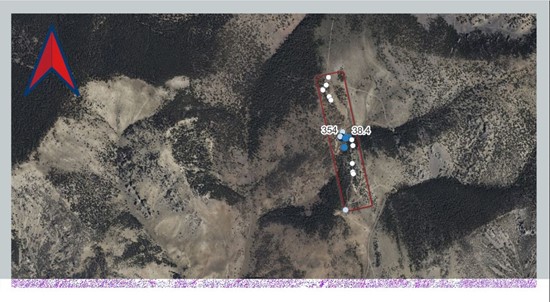
Figure 3. Rock samples -Ag (g/t), Long Canyon.
Graduated symbols show silver in grab rock samples; class breaks are as shown in the legend. Annotated labels mark select sample values for location reference only. USCM claim boundary in red. UTM Zone 12, scale 1:17,500. Rock samples are selective and may not be representative of the property as a whole; see QA/QC statement in the news release.
To view an enhanced version of this graphic, please visit:
https://images.newsfilecorp.com/files/8837/266554_uscritical.jpg.
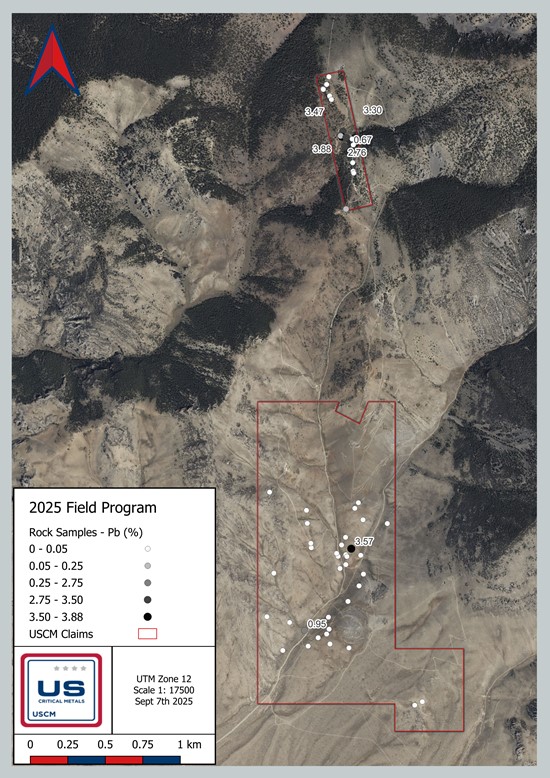
Figure 4. Rock samples - Pb (%), Long Canyon.
Lead in grab rock samples shown in percent with graduated classes per legend. Annotated labels mark select sample values for location reference only. USCM claims outlined in red. UTM Zone 12, scale 1:17,500. Rock samples are selective and may not be representative; see QA/QC.
To view an enhanced version of this graphic, please visit:
https://images.newsfilecorp.com/files/8837/266554_pb%20clipped%20final.jpg
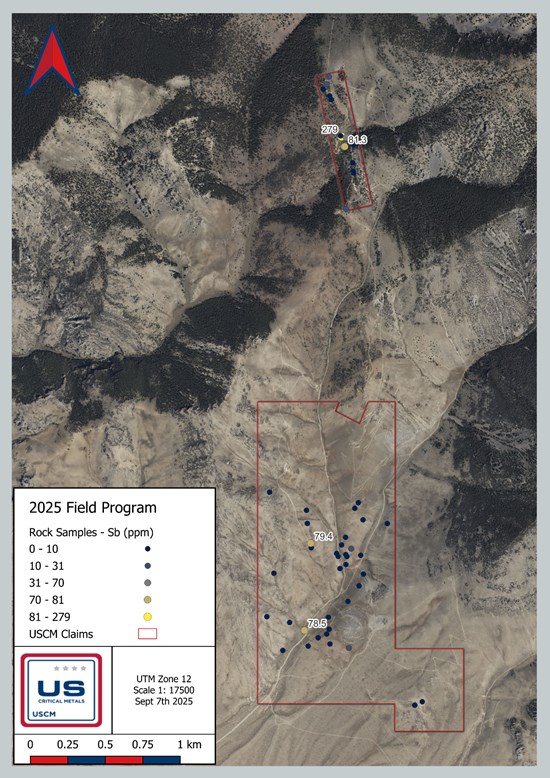
Figure 5. Rock samples - Sb (ppm), Long Canyon.
Antimony (pathfinder for polymetallic replacement systems) in grab rock samples, displayed with graduated classes per legend. Annotated labels mark select sample values for location reference only. USCM claims outlined in red. UTM Zone 12, scale 1:17,500. Rock samples are selective and may not be representative; see QA/QC.
To view an enhanced version of this graphic, please visit:
https://images.newsfilecorp.com/files/8837/266554_bb52367d44ec7a2c_005full.jpg
Further Exploration
Based on these results, USCM plans to undertake follow-up work tailored to both deposit styles on the current claim block, including:
Airborne EM or ground TDEM to trace conductive shale corridors and IP-resistivity over CRD corridors to map chargeable sulfides and resistive carbonate caps;
Structural mapping to refine NE-trending corridors focusing fluid flow;
Stratigraphic mapping to discriminate McGowan Creek versus shaly Middle Canyon facies and identify redox contrasts; and
Channel sampling on key outcrops and scout drilling.
Source Information
- International Atomic Energy Agency. (2014, June 26). The giant Alum Shale polymetallic deposits of Jämtland, Sweden: A major potential low-cost supplier of uranium for the future (conference contribution, URAM 2014). https://conferences.iaea.org/event/44/contributions/7837/contribution.pdf
- Hammarstrom, J. M. (2002). Environmental geochemistry of skarn and polymetallic carbonate-replacement deposit models. In Progress on geoenvironmental models for selected deposit types (USGS Open-File Report 02-195, chap. H). U.S. Geological Survey. https://pubs.usgs.gov/of/2002/of02-195/OF02-195H.pdf
- U.S. Geological Survey. (2024). Mineral commodity summaries 2024 (Silver; Lead; Zinc chapters). U.S. Department of the Interior. https://pubs.usgs.gov/periodicals/mcs/
- U.S. Geological Survey. (n.d.). Clayton Silver mine, Bayhorse district, Custer County, Idaho [MRDS record]. Mineral Resources Data System. Retrieved September 11, 2025, from https://mrdata.usgs.gov/mrds/
- Idaho Geological Survey. (n.d.). Triumph mine, Warm Springs district, Blaine County, Idaho [Mines and Prospects Database record]. Retrieved September 11, 2025, from https://www.idahogeology.org/
- U.S. Geological Survey. (n.d.). Viola mine, Nicholia (Birch Creek) district, Lemhi County, Idaho [MRDS record]. Mineral Resources Data System. Retrieved September 11, 2025, from https://mrdata.usgs.gov/mrds/
Oxide Conversions and Units
V2O5 (ppm) = V (ppm) × 1.7847; U3O₈ (ppm) = U (ppm) × 1.17924.
Percent values: % = ppm ÷ 10,000. Silver reported as g/t (1 ppm = 1 g/t).
Sampling Methods and QA/QC
All rock samples were prepared and analyzed by AGAT Laboratories, Calgary, Alberta, an ISO/IEC 17025 and ISO 9001 certified laboratory. Samples were air-dried, crushed to achieve >=70% passing 2 mm, and a 250 g split was pulverized to >=85% passing 75 µm. Sizing checks were performed by the laboratory.
Analytical methods. Two analytical streams were used based on observed geology:
Black-shale targeted samples (U-V-Mo-Ni association): analyzed by lithium borate fusion with ICP-MS multi-element finish (AGAT LB-fusion multi-element package; certificate code 201-381 or equivalent). Fusion provides near-total decomposition of refractory phases in metalliferous black shales and improves recovery for V, U, Mo, and associated metals.
CRD/base-metal targeted samples (Pb-Zn-Ag ± Sb): analyzed by four-acid (HF-HClO4-HNO3-HCl) digestion with ICP-OES/ICP-MS finish (AGAT 201-071, Metals Package), a near-total digest appropriate for sulfide-hosted base metals.
Black-shale and CRD samples were analyzed by near-total digestion methods; results are reported as total metal and are not affected by oxidation state.
Quality assurance/quality control. Blind QA/QC materials were inserted at an overall rate of ~5.2% across program submissions. CRMs were selected to bracket expected grades and matched to the analytical stream (fusion vs four-acid) used for adjacent samples. All CRM results were within ±3 standard deviations of certified values. AGAT also inserted internal control standards, blanks, and duplicates at set frequencies; laboratory blanks showed no indication of contamination.
Additional details on analytical methods, detection limits, and control performance are available on request.
Qualified Person
The scientific and technical information contained in this news release has been reviewed and approved by Robert J. Johansing, B.Sc. (Geology), M.Sc. (Economic Geology), a Qualified Person as defined in NI 43-101. Mr. Johansing is a consultant to the Company.
About US Critical Metals Corp.
USCM is focused on mining projects that will further secure the US supply of critical metals and rare earth elements, which are essential to fueling the new age economy. Pursuant to investments and option agreements with private Canadian and American companies, USCM's projects include the Long Canyon Uranium and Vanadium Property in Idaho, the Sheep Creek located in Montana, the McDermitt Lithium Property in Nevada, the Clayton Ridge Lithium Property located in Nevada, and the Haynes Cobalt Property located in Idaho. A significant percentage of the world's critical metal and rare earth supply comes from nations with interests that are contrary to those of the US. USCM intends to explore and develop critical metals and rare earth assets with near- and long-term strategic value to the advancement of US interests.
For further information, please contact:
Darren Collins
Chief Executive Officer & Director
Email: dcollins@uscmcorp.com
Neither the Canadian Securities Exchange nor the Market Regulator (as that term is defined in the policies of the Canadian Securities Exchange) accepts responsibility for the adequacy or accuracy of this release.
Disclaimer for Forward-Looking Information
This news release contains certain information that may be deemed "forward-looking information" with respect to USCM within the meaning of applicable securities laws. Such forward-looking information involves known and unknown risks, uncertainties and other factors that may cause USCM's actual results, performance or achievements, or developments in the industry to differ materially from the anticipated results, performance or achievements expressed or implied by such forward-looking information. Forward-looking information includes statements that are not historical facts and are generally, but not always, identified by the words "expects", "plans", "anticipates", "believes", "intends", "estimates", "projects", "potential" and similar expressions, or that events or conditions "will", "would", "may", "could" or "should" occur. Forward-looking information contained in this press release may include, without limitation, the exploration plans including the proposed follow-up work and expected exploration results at Long Canyon project, the expected results of the changes in the critical minerals industry in the U.S., results of operations, and the expected financial performance of the Company.
Although USCM believes the forward-looking information contained in this news release is reasonable based on information available on the date hereof, by its nature, forward-looking information involves assumptions and known and unknown risks, uncertainties and other factors which may cause our actual results, level of activity, performance or achievements, or other future events, to be materially different from any future results, performance or achievements expressed or implied by such forward-looking information.
Examples of such assumptions, risks and uncertainties include, without limitation, assumptions, risks and uncertainties associated with general economic conditions; adverse industry events; the receipt of required regulatory approvals and the timing of such approvals; that USCM maintains good relationships with the communities in which it operates or proposes to operate; future legislative and regulatory developments in the mining sector; USCM's ability to access sufficient capital from internal and external sources, and/or inability to access sufficient capital on favorable terms; mining industry and markets in Canada and generally; the ability of USCM to implement its business strategies; competition; the risk that any of the assumptions prove not to be valid or reliable, which could result in delays, or cessation in planned work; risks associated with the interpretation of data, the geology, grade and continuity of mineral deposits; the possibility that results will not be consistent with USCM's expectations; as well as other assumptions, risks and uncertainties applicable to mineral exploration and development activities and to USCM, including as set forth in the USCM's public disclosure documents filed on the SEDAR+ website at www.sedarplus.ca.
The forward-looking information contained in this press release represents the expectations of USCM as of the date of this press release and, accordingly, is subject to change after such date. Readers should not place undue importance on forward-looking information and should not rely upon this information as of any other date. While USCM may elect to, it does not undertake to update this information at any particular time except as required in accordance with applicable laws.
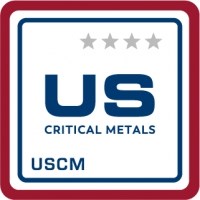
To view the source version of this press release, please visit https://www.newsfilecorp.com/release/266554
SOURCE: US Critical Metals Corp.
